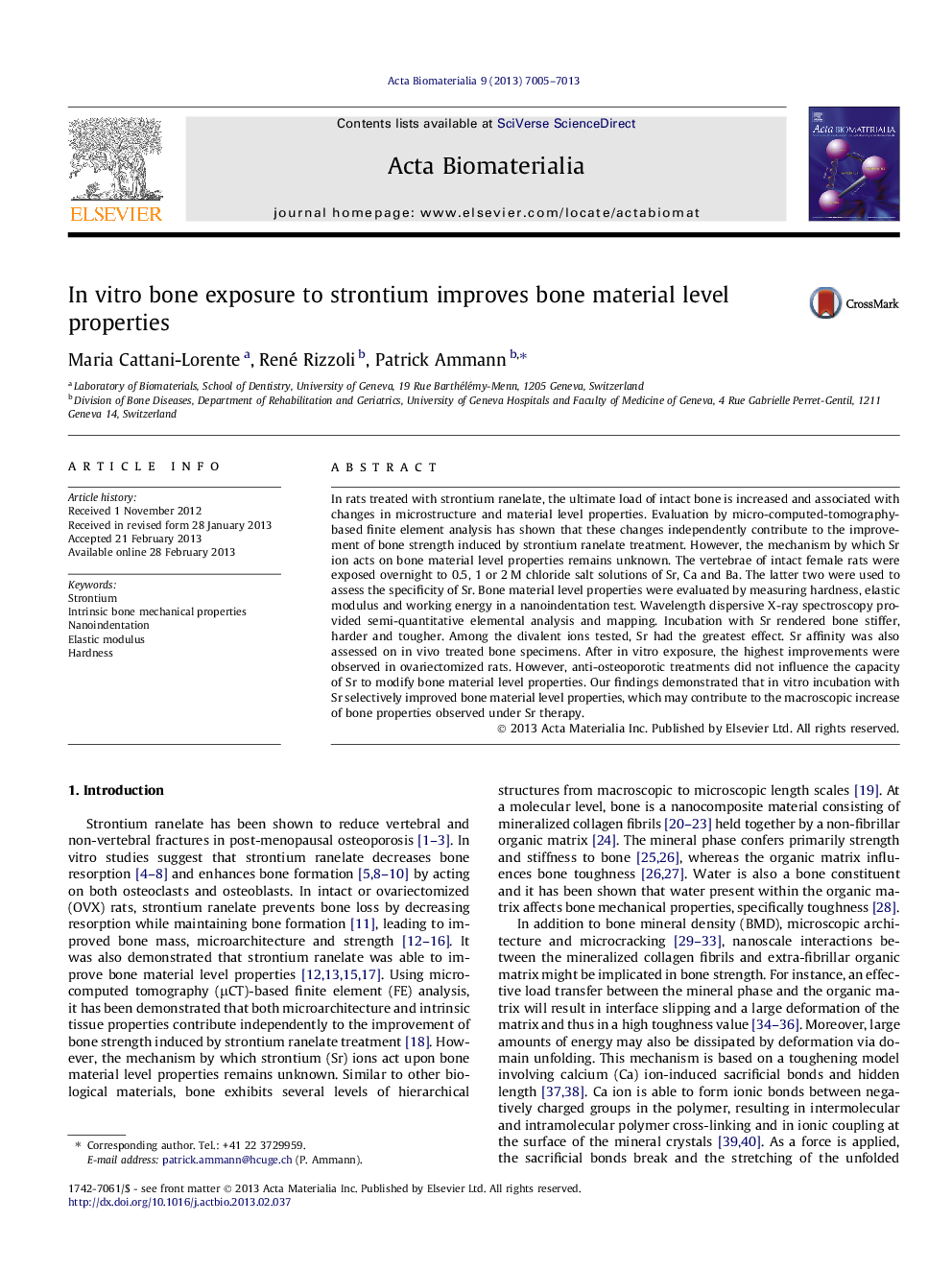| Article ID | Journal | Published Year | Pages | File Type |
|---|---|---|---|---|
| 10159562 | Acta Biomaterialia | 2013 | 9 Pages |
Abstract
In rats treated with strontium ranelate, the ultimate load of intact bone is increased and associated with changes in microstructure and material level properties. Evaluation by micro-computed-tomography-based finite element analysis has shown that these changes independently contribute to the improvement of bone strength induced by strontium ranelate treatment. However, the mechanism by which Sr ion acts on bone material level properties remains unknown. The vertebrae of intact female rats were exposed overnight to 0.5, 1 or 2Â M chloride salt solutions of Sr, Ca and Ba. The latter two were used to assess the specificity of Sr. Bone material level properties were evaluated by measuring hardness, elastic modulus and working energy in a nanoindentation test. Wavelength dispersive X-ray spectroscopy provided semi-quantitative elemental analysis and mapping. Incubation with Sr rendered bone stiffer, harder and tougher. Among the divalent ions tested, Sr had the greatest effect. Sr affinity was also assessed on in vivo treated bone specimens. After in vitro exposure, the highest improvements were observed in ovariectomized rats. However, anti-osteoporotic treatments did not influence the capacity of Sr to modify bone material level properties. Our findings demonstrated that in vitro incubation with Sr selectively improved bone material level properties, which may contribute to the macroscopic increase of bone properties observed under Sr therapy.
Related Topics
Physical Sciences and Engineering
Chemical Engineering
Bioengineering
Authors
Maria Cattani-Lorente, René Rizzoli, Patrick Ammann,
